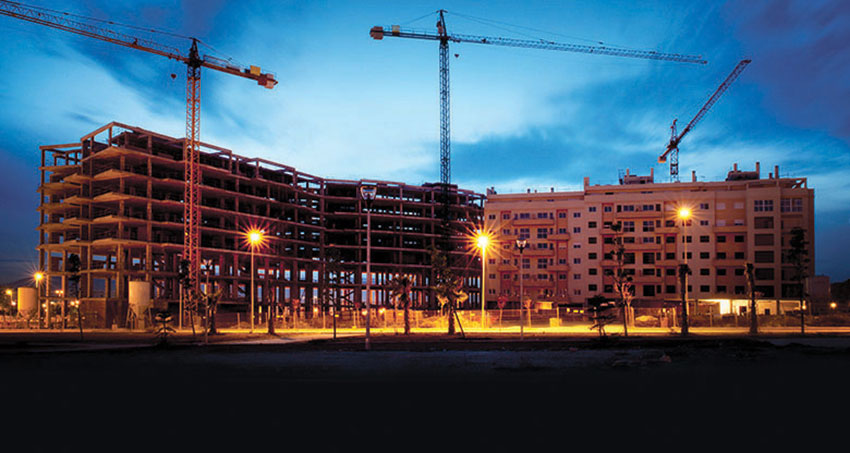Keeping It Neutral–On Carbon
Learning Objectives:
- Identify and recognize the significance of embodied carbon in buildings and its short-term and long-term detriments to the natural environment and human welfare.
- Assess the ways that design professionals can discern and specify building products and materials that contain less embodied carbon, improve human wellness for health, and meet green building goals.
- Explain the importance of still addressing carbon emissions related to building operations including those coming from energy use, water use, and related factors.
- Determine ways to incorporate carbon-reducing strategies into current building projects by focusing on sustainable products, alternative energy, and renewable energy sources that improve safety and welfare for all users.
Credits:
This course is approved as a Structured Course
This course can be self-reported to the AANB, as per their CE Guidelines
Approved for structured learning
Approved for Core Learning
This course can be self-reported to the NLAA
Course may qualify for Learning Hours with NWTAA
Course eligible for OAA Learning Hours
This course is approved as a core course
This course can be self-reported for Learning Units to the Architectural Institute of British Columbia
Carbon dioxide is a natural gas that is present in the atmosphere. It has been extensively documented, though, that there is currently too much of it present in the air due to the extensive, sustained burning of carbon-rich fossil fuels over the past 150 years or so. Buildings are a significant contributor to this problem in two ways. First, is the amount of carbon that is burned in the process of acquiring, manufacturing, and transporting key building materials such as concrete, steel, and aluminum. This “embodied carbon” has been shown to be quite significant in terms of environmental impact. The second contributor is the need for buildings to consume energy for their operations─heating, cooling, lighting, ventilation, etc. When such consumed energy comes from fossil fuel sources, either on site or at an electricity-generating power plant, the building becomes a direct contributor to the overall problem through normal building operations. In this course, we look at some ways that both problems can be addressed. Architects and other design professionals have been addressing operational energy and carbon for several decades. The time is also past due for addressing the embodied carbon in our buildings as well.

Photo courtesy of PERC
Addressing embodied carbon in construction materials as well as the operational carbon from energy consumption are both needed to achieve full carbon neutral results.
EMBODIED CARBON
The issue of addressing embodied carbon in buildings has received a fair bit of attention in recent years. One of the leading sources for accurate information on this topic is the not-for-profit organization known as Architecture 2030 founded by AIA Gold Medalist Ed Mazria, FAIA. The organization points out, “Embodied carbon represents the carbon emissions associated with making building products and construction, from raw material extraction to manufacturing, transportation, and end of life disposal or recycling.” How significant is the role of embodied carbon? Architecture 2030 reports, “Annually, embodied carbon is responsible for 11% of global GHG emissions and 28% of global building sector emissions. It is anticipated that embodied carbon will be responsible for 72% of the carbon emissions associated with global new construction between now and 2030.” Recognizing this significance, examples of ways to address embodied carbon in buildings are discussed in the following sections.

Images courtesy of Sloan
The use of third-party verification programs, such as those represented here, can help designers explore and understand which products have lower embodied carbon compared to others.
BUILDING PRODUCTS AND MATERIALS
Architects and designers routinely select and specify the materials and products that are used in building projects. Therefore, we also have an incredible opportunity to reduce the amount of embodied carbon in buildings through well-informed material selection, sustainability-focused specification writing, and, of course, through design. The result can be significant since embodied emissions are locked in once the building is constructed and cannot be taken back or reduced at that point. It is not uncommon for that embodied carbon to be the equivalent of over 20 years’ worth of the carbon produced by building operations – concentrated in the few years of manufacture and construction.
Architecture 2030 points out that the use of just three materials–concrete, steel, and aluminum–are responsible for 23% of total global emissions. Note that it is not 23% of all building materials, it is a staggering 23% of all of the emissions from all sources on the planet. Beginning with designs and specifications that reduce or minimize the use of these three materials is a good start in all cases. While there are alternative materials that can be considered for some things (see https://materialspalette.org/ ), some amount of aluminum and steel will certainly be needed and used in most buildings.
Based on the above, the first step in specifying more carbon-neutral products is to understand how manufacturers measure and then reduce or offset their carbon footprint with sustainable manufacturing processes. Many tools are now available to assist in this process, including requirements for meeting green building certification standards such as LEED which is anticipating updates to address the ongoing push for decarbonization through electrification, fossil fuel elimination, and on-site and offsite renewables─all leading to carbon neutrality in buildings. LEED and other rating systems (i.e., Green Guard, BREAM, WELL, etc.) rely on the use of Environmental Product Declarations (EPDs) or the human-centered Health Product Declarations (HPDs). All of these tools are based on third-party verified data related to the makeup and quantity of the different components or ingredients of a building material or product. By using this information, different products can be reviewed and compared to make an informed decision on which ones are closer to carbon neutral, and environmentally preferable overall, than others.
Carbon Offset by Manufacturers
As architects and designers become more aware of the breadth of sustainable commercial products, the construction industry is meeting the demand for further growth. This is particularly true among manufacturers of products for restrooms. In this case, there are fewer material choices that work well for things like plumbing fixtures, sinks, controls, etc. Manufacturers that are committed to meeting sustainability and carbon neutral goals can use the EPDs for their products to first assess the carbon footprint of their products and second, decide how to address or reduce that carbon footprint.

Photo courtesy of Sloan
The use of carbon-sequestering trees to offset the carbon dioxide emitted during the manufacture of products is one of several strategies to help drive the world to a more carbon-neutral state.
Architecture 2030 states, “Achieving zero embodied emissions will require adopting the principles of reuse, (including renovating existing buildings, using recycled materials, and designing for deconstruction); reduce, (including material optimization and the specification of low to zero carbon materials); and sequester, (including the design of carbon sequestering sites and the use of carbon sequestering materials.)” (https://architecture2030.org/embodied-carbon-actions/ ). Based on this, it is good for design professionals to look at how reuse and reduce principles can be worked into a design. The third stated approach to addressing carbon is to consider sequestration of carbon and carbon dioxide, either as part of the project or through the efforts of manufacturers.
Sequestration involves using materials that can absorb carbon as part of a normal process. The best example of this comes from nature where vegetation, and trees in particular, use the normal process of photosynthesis to absorb carbon dioxide out of the air, split the molecules to store or sequester carbon in the wood, and release the freed oxygen back to the atmosphere. It is recognized that by planting new trees, companies can effectively offset the amount of carbon dioxide released into the atmosphere from other sources, such as the manufacturing of building products.
For example, at least one manufacturer of restroom products and fixtures has initiated a process of offsetting the carbon produced from their production process. They utilized data from their EPDs to identify exactly how much carbon is generated per product produced. Then they partnered with the not-for-profit Arbor Day Foundation to purchase an equal number of reforestation credits in order to offset the carbon generated. In their case, it worked out to 2-1/2 trees for each flushometer produced and similarly for other products. All of their current and future forestry carbon credits are listed with the American Carbon Registry, which oversees the registration and verification of carbon offsets. It also meets the strict guidelines of the British Standards Institute (BSI) PAS 2060 standard. This standard sets the requirements for achieving and demonstrating carbon neutrality. This approach is certainly a positive step, especially when combined with other carbon neutral initiatives.
Notice

www.sloan.com

















